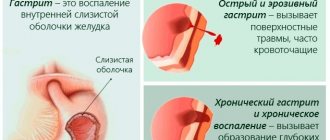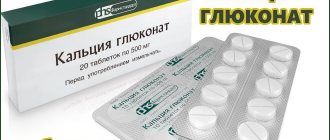There is not a single organ or tissue in the human body that does not contain calcium. Most of the calcium in the body is in the bones and teeth. Together with vitamin D, it is responsible for the proper formation of bone tissue. Due to its high content in the body, it is called a macronutrient - a compound that is found in high concentrations in human tissues.
More than 95% of calcium is found in bone mass, providing bone growth along with another mineral - phosphorus. It prevents osteoporosis by maintaining bone strength and normal structure. The rest of the calcium is contained in cells, intercellular space and blood, participating in many vital processes:
- Muscle contractility and transmission of nerve impulses.
- Signal-receptor function.
- Maintaining normal blood clotting.
- Participation in the synthesis of neurotransmitters and hormonal substances.
- Regulation of heart rate and conductivity.
- Modulator of the activity of enzyme systems of the body.
Calcium enters the body of an adult with food, and for infants with mother's milk. Its absorption occurs in the intestines, from where it is distributed throughout the tissues. The supply and absorption of calcium is affected by the state of the gastrointestinal tract - in the presence of diseases that occur with malabsorption syndromes, its entry into the bloodstream worsens. In this case, even with sufficient quantities consumed in food, a deficiency state develops. Calcium is excreted by the urinary system, its loss increases when taking diuretics (for example, during the treatment of cardiovascular diseases).
A deficiency of this element leads to various problems, such as osteoporosis, impaired hair and nail growth, and decreased neuromuscular excitability. Its excess is also dangerous to health, which is why there are daily calcium intake standards established for different age groups.
Release form and composition
Dosage form - solution for intravenous and intramuscular administration: transparent, somewhat yellowish or colorless (in a cardboard box there is 1 blister pack containing 10 ampoules of 10 ml each, and instructions for use of Calcium gluconate-Vial).
Composition of 1 ml solution:
- active substance: calcium gluconate monohydrate – 100 mg;
- auxiliary components: calcium hydroxide – 0.5 mg; lactic acid – 5 mg; water for injection – up to 1 ml.
Vitamin and mineral complexes containing calcium
Calcium is excreted from the body daily through urine, sweat and feces, so it is important to regularly replenish this mineral.
There are multivitamin complexes containing this element, which can be used both to prevent deficiency and as part of therapy in the treatment of certain diseases.
The most popular preparations containing calcium:
- "Complivit";
- "Vitrum";
- «;
- "Bio Max";
- "Supradin."
Advice! When choosing a multivitamin complex, preference should be given to those preparations that contain calcium in the form of hydroxyapatite and citrate - these compounds are easily absorbed and reduce the risk of developing urolithiasis.
Calcium gluconate against viral infections
Viral infections develop against a background of reduced, weakened immunity and are accompanied by a rapid decrease in the amount of microelements in the blood. This negatively affects the functioning of many internal organs and contributes to the rapid spread of the infectious process.
Action for viral infections:
- improving the functioning of the cardiovascular system;
- strengthening the strength of bone tissue;
- strengthening the musculoskeletal system;
- normalization of metabolic processes in the body;
- increasing immunity to fight viruses and infections.
Intravenous and intramuscular injections with the drug activate metabolic processes in the body. This significantly accelerates the elimination of harmful waste, toxins and decay products that accumulated during the disease and worsen the overall well-being of a person.
In many cases, calcium gluconate is part of the complex treatment of colds.
This pharmacological agent does not have an antipyretic, antiviral or antispasmodic effect, but it effectively increases the body's resistance to viruses and inhibits the further spread of their waste products through the bloodstream.
Absorption of calcium in the body
It is generally accepted that cottage cheese is the product containing the greatest amount of calcium, however, this is not so. For example, sesame seeds contain ten times more trace elements. Why do all experts recommend consuming cottage cheese and other fermented milk products?
The fact is that calcium salts are insoluble by nature and their absorption in the digestive system occurs only under certain conditions. To absorb calcium, it is necessary to consume it in combination with other important microelements and vitamins:
- Vitamin D
- Phosphorus
- Magnesium
This compound is found only in products of animal origin, which is why cottage cheese, cheese, milk, sardines and mackerel are the optimal source of calcium. But alcohol, caffeine and nicotine, on the contrary, contribute to its intensive removal from the body. In addition, regular physical activity contributes to better absorption of the microelement.
Calcium is best absorbed with phosphorus, magnesium and vitamin D.
Pharmacological properties
Pharmacodynamics
Calcium gluconate-Vial is one of the calcium preparations; its action is aimed at replenishing the deficiency of calcium ions, which is necessary to ensure the transmission of nerve impulses, contraction of smooth and skeletal muscles, bone tissue formation, myocardial function, and blood clotting.
The drug, when administered intravenously, has a stimulating effect on the sympathetic part of the autonomic nervous system, and also has a moderate diuretic property and enhances the release of epinephrine by the adrenal glands.
Pharmacokinetics
When administered parenterally, calcium gluconate monohydrate is evenly distributed in all organs and tissues through the bloodstream. Approximately 45% of the substance in plasma is complexed with proteins.
Penetrates through the placental barrier into breast milk. Calcium gluconate is excreted from the body primarily by the kidneys.
Mechanism of action
Calcium preparations have a fairly wide range of therapeutic effects, which means that their mechanism of action is quite complex. Here are just a few examples of the effects of drugs:
- Calcium salts, entering the stomach, neutralize the acidity of gastric juice by affecting hydrochloric acid. Unfortunately, after the cessation of the drug's effect, an increase in secretion is observed, so the drugs are used for the symptomatic elimination of a hyperacid state with a subsequent transition to antisecretory drugs.
- By reducing the acidity of gastric juice, the drugs prevent the formation of ulcers of the gastric mucosa; this is typical for non-atrophic gastritis, which sooner or later leads to the formation of a defect in the mucosa due to the aggression of hydrochloric acid.
- Calcium supplements normalize the acid-base state of the body, as well as electrolyte balance. A normal ratio of calcium, sodium, magnesium and potassium ions is necessary for the functioning of nerve and muscle cells.
- One of the main properties of a microelement is its participation in the construction of bone tissue. Bone consists of mineral and protein parts. For osteoporosis or osteomalacia, the drug restores bone density and its functional properties.
Taking together the information listed above, we can highlight the following effects of calcium supplements:
- Antacid – neutralization of hydrochloric acid of the stomach.
- Antiulcer – prevention of the formation of defects in the gastrointestinal mucosa.
- Normalization of mineral metabolism.
- Replenishment of microelement deficiency in the body and in bone tissue in particular.
Having highlighted the main features of the mechanism of action of these drugs, we can suggest indications for their use.
Contraindications and side effects
The instructions for calcium gluconate in ampoules say that injections can also be prescribed for:
- increased need for calcium during postmenopause, pregnancy and lactation;
- bronchitis, runny nose and colds;
- tetany, osteoporosis and hypoparathyroidism;
- bone fractures, chronic diarrhea and treatment with medications against epilepsy;
- hypocalcemia;
- disturbances in the functioning of nerve impulses in muscle tissue;
- poisoning with magnesium salts and fluoric acid, oxalic acid.
Injections with this drug are additionally included in complex therapy when it is necessary to stop bleeding, remove toxins from the liver, alleviate pulmonary tuberculosis, bronchial asthma and dystrophy. Also, such injections are included in complex treatment:
- serum sickness;
- febrile syndrome;
- hives.
It is indicated as an additional hemostatic agent in the treatment of various bleedings: nasal, pulmonary, uterine in women and gastrointestinal.
Smoke is not without fire
What can you say about this? There is no smoke without fire. Back in 2008, a study by Australian scientists was published in the influential British Medical Journal (BMJ). They found that in women who took one gram of calcium citrate daily to prevent osteoporosis for many years, the risk of heart attacks doubled.
In 2010, the same journal published a meta-analysis (combining a number of studies and re-evaluating them), which assessed the use of calcium supplements (without vitamin D) used to prevent osteoporosis. As a result, it turned out that calcium increases the likelihood of developing myocardial infarction by 31%. At the same time, it was noted that the risk of strokes was still increasing, but not statistically significant.
Scientists then stated that the indications for the use of calcium supplements to prevent osteoporosis should be reconsidered. Moreover, many experts then began to speak out not only against drugs with calcium, but also against complex products containing vitamin D. Although, strictly speaking, such drugs were not included in this meta-analysis. But they had a reason to say so. And that's why.
Article on the topic
Test yourself. Are you getting enough calcium?
Indications for use
- diseases accompanied by disorders such as hypocalcemia, disturbances in the conduction of nerve impulses in muscle tissue, increased permeability of cell membranes (including blood vessels);
- hypoparathyroidism (osteoporosis, latent tetany), vitamin D metabolism disorders, including rickets (spasmophilia, osteomalacia), hyperphosphatemia in patients with chronic renal failure;
- increased need for calcium (during periods of increased body growth, pregnancy, lactation), insufficient calcium content in food, disturbances in its metabolism (during postmenopause);
- increased calcium excretion associated with prolonged bed rest, chronic diarrhea, secondary hypocalcemia during prolonged therapy with diuretics, antiepileptic drugs, glucocorticosteroids;
- bleeding of various origins;
- allergic diseases, including serum sickness, urticaria, angioedema, febrile syndrome, pruritic dermatoses, itching, reactions to food intake and drug administration;
- eclampsia;
- hyperkalemic form of paroxysmal myoplegia;
- toxic liver damage, parenchymal hepatitis, nephritis;
- rickets, bronchial asthma, pulmonary tuberculosis, dystrophic alimentary edema, lead colic, osteomalacia.
Gilbert's syndrome: treatment with traditional medicine
Discussion: 5 comments
- Natalia:
07/06/2017 at 18:51I would like to add Danone plant matter, cottage cheese and yoghurt to products with calcium. They have added calcium and vitamin D, so they are healthy and tasty for children. Otherwise, children usually cannot be persuaded to eat healthy foods.
- Zhenya:
07/06/2018 at 06:02
Is calcium from artesian and mineral water well absorbed without additional components?
Svetlana:
02/18/2019 at 21:50
Zhenya, it seems to me that if the water does not contain a large amount of iron, which inhibits calcium, then calcium from such water is absorbed. Don't know. The best source of dietary calcium, of course, is hard cheese and sesame seeds. There is still little calcium in milk, kefir, and cottage cheese. But what surprises me is that many of us in Soviet childhood ate cheap pharmaceutical calcium permanganate (some children ate chalk or even lime from the wall), and then imported drugs came, and our “children’s” calcium, as it turned out, was, in fact, completely is not effective and is not absorbed by the body at all. What is this, a conspiracy by pharmacists or the truth based on independent medical research?
02/11/2019 at 11:41
I decided to give my 6-year-old son special vitamins with calcium, in addition to the foods that are in his diet, because as a child the child had very bad teeth, I wouldn’t want him to have problems with this in adulthood, I also included a baby formula calcium bears (their release form is convenient, the child likes it, and the composition is good)
10/09/2019 at 07:10
Calcium is especially important for children. Bones, teeth... all this is just developing, so you need to “feed” from the outside. We give the baby vitamins (for teeth, bones and growth) + we try to give him more cottage cheese - usually it’s always the same for breakfast - either plain with sour cream and nuts, or in the form of casseroles, cheesecakes. We always do preventive examinations with the doctor - there are no problems with the teeth or skeletal system))
Calcium gluconate (injections): what is it prescribed for?
The key indication for the use of the drug is a critically low calcium content in the body, diseases accompanied by increased permeability of cell membranes (especially in blood vessels), and disruption of the passage of nerve impulses in the muscles. Therefore, the drug is used primarily as a mineral supplement that eliminates hypocalcemia.
Microelement deficiency can occur due to prolonged bed rest, chronic diarrhea, long-term use of a number of medications - diuretics, anticonvulsants, glucocorticosteroids.
It is prescribed for:
- insufficiency of the parathyroid glands (hidden tetany, osteoporosis due to hypoparathyroidism);
- violation of vitamin D metabolism (rickets, accompanied by tonic and clonic-tonic convulsions, softening of bones);
- skin diseases (itching, psoriasis, eczema);
- acute parenchymal hepatitis;
- Hamstorp's disease (accompanied by attacks of severe muscle weakness);
- severe intoxications, including those provoked by poisoning with magnesium salts, fluoric and oxalic acids.
There are many more specific reasons for which calcium injections are prescribed.
When a person experiences an allergic reaction to any allergen or complications develop (especially those associated with taking medications), the doctor often prescribes calcium gluconate as part of a broader range of medications. As you know, the appearance of allergies indicates a disruption in the functioning of the human immune system.
- permeability of vessel walls. When a person’s calcium is within normal limits, the walls of blood vessels become denser and do not allow the allergen to enter the body;
- in the complex treatment of allergies together with other medications, the drug has a positive effect on connective tissue cells, accelerating a person’s healing from allergies.
Of course, calcium gluconate, like any antihistamine, does not give immediate results, but it reduces the manifestation of symptoms of the disease, and also, in combination with other antiallergic medications, significantly shortens the treatment period and reduces the risk of complications. Therefore, to relieve allergies, doctors prescribe calcium gluconate intravenously.
Calcium takes part in the body's absorption of vitamin D. For this reason, experts often prescribe calcium-containing preparations to children and women during pregnancy, breastfeeding and menopause. It is during these periods that a rapid loss of microelements, a lack of calcium, and a violation of its metabolism are observed.
In addition, calcium gluconate, which normalizes the content of microelements in human blood, is used for severe diarrhea. In this case, injections of the drug are used in conjunction with dehydrating drugs to restore water and electrolyte balance.
With viral infections, there is a rapid decline in calcium levels in the blood, which, of course, affects the systems and functions of the body, and also causes general weakness. The use of calcium gluconate for infections is due to the following effects of the drug:
- strengthens the musculoskeletal system;
- increases bone strength;
- improves the functioning of the cardiovascular system;
- stimulates overall activity and performance;
- ensures the implementation of all metabolic processes.
Calcium gluconate significantly increases the calcium content in the blood, which, in turn, takes part in cleansing the body of toxins and wastes that accumulate during illness and adversely affect the general condition of the patient.
In case of food poisoning and other diseases, intoxication of the liver occurs, as a result of which the level of calcium in the human blood decreases. This condition is accompanied by the following symptoms:
- pain in the right side;
- heat;
- convulsions;
- increased sweating;
- general weakness of the body;
- yellowing of the skin and whites of the eyes.
Calcium gluconate prescribed for such symptoms for use in injections increases the content of this microelement in the body, which, in turn, contributes to accelerated human recovery by improving the immune system’s ability to resist the disease.
In addition, the drug is prescribed for the treatment of various kidney diseases, including nephritis and chronic pathologies with high levels of phosphate in the blood serum. In case of renal failure and various nephritis, the introduction of calcium gluconate into a vein normalizes the level of electrolytes in the human blood, which also helps to weaken the inflammatory process and speed up recovery.
Calcium promotes blood clotting. Therefore, if a patient experiences bleeding that does not stop for a long time, then this is a direct signal about its deficiency in the body. In this case, an injection of calcium into a vein will restore the normal content of the microelement and balance the blood clotting process.
Calcium gluconate stimulates the contraction of the smooth muscle cell layer of blood vessels. As a result of this effect, the gap between cells is reduced, and this prevents the penetration of allergens and other pathological agents into the blood.
For children, calcium ampoules are prescribed during active growth to strengthen bones and proper development. The drug can be prescribed for many diseases of varying severity. Calcium gluconate has long proven its effectiveness in the treatment of pathologies such as food poisoning, ARVI, serum sickness, urticaria and for reducing vascular permeability.
As you know, women during pregnancy experience a lack of many vitamins and microelements in their bodies. This phenomenon is associated with the fact that the expectant mother, while carrying a child, gives most of the useful elements to him. Symptoms of calcium deficiency include:
- a sharp deterioration in the condition of the teeth. They begin to crumble, the enamel is destroyed;
- deterioration of hair and nails;
- frequent “goosebumps” all over the body;
- convulsions;
- fatigue.
To return the calcium balance to normal, experts prescribe injections of a drug containing this trace element for use by adult women during pregnancy. Often, medicine is prescribed without waiting for the first symptoms, for prevention. However, pregnant women are only allowed to take it in tablet form.
Contraindications
Like any medicine, calcium gluconate has contraindications, which were identified during clinical trials. The instructions for use indicate that the medicine is prohibited for people:
- with identified symptoms of individual intolerance to the components of the composition;
- with increased calcium levels in the blood;
- under the age of 15;
- with severe kidney disease;
- with an increased level of blood clotting, a tendency to form blood clots;
- during pregnancy and lactation, if we are talking about injections;
- suffering from atherosclerosis;
- when rapid removal of calcium from the body along with urine is detected.
The daily requirement of calcium, and what happens when there is a lack of it
The average daily calcium intake for an adult varies from 800 to 2400 mg. In this case, age periods, gender, physiological and pathological conditions are taken into account:
- for children up to 6 months, 200-1000 mg/day is enough, for 7-12 months - 250-1500 mg, from one to 3 years - 800-200 mg, for 4-8 years - 1000-2500 mg, for 9-18 years – 1500-3000 mg;
- for adults, when the change of teeth and bone growth have stopped, 1000 to 2000 mg per day is sufficient, with the exception of pregnant and lactating women who should consume calcium 200-3000 mg per day.
People exposed to adverse factors, occupational hazards, those working with heavy physical activity, and athletes also need an increased calcium intake of up to 3000 mg/day.
When calcium intake is less than the lower limit of normal, or its absorption is impaired (lack of vitamins), disorders occur in the body: caries develops, hair falls out, nails crumble, increased bleeding appears, pressure changes, palpitations, memory and sleep are disturbed, muscle pain appears, neuralgia, allergic reactions. General well-being is also impaired, and resistance to infections is reduced.
Contraindications
Absolute:
- severe hypercalciuria;
- hypercalcemia (Ca2+ concentration should not be higher than 6 mEq/L or 12 mg%);
- sarcoidosis;
- calcium nephrourolithiasis;
- simultaneous use of cardiac glycosides (risk of arrhythmias);
- individual intolerance to the components of the drug.
Relative (injections of Calcium gluconate-Vial are prescribed under medical supervision):
- moderate chronic renal failure;
- dehydration;
- diarrhea;
- chronic circulatory failure;
- electrolyte disturbances (associated with the likelihood of hypercalcemia);
- slight hypercalciuria;
- aggravated history of calcium nephrourolithiasis;
- hypercoagulability;
- widespread atherosclerosis;
- age up to 18 years.
Interesting Facts
Hard cheese contains 4 times more calcium than milk.
Some types of leafy vegetables contain more calcium than dairy products.
Fresh and processed fish contains less calcium than canned fish.
The largest amount of calcium is present in foods of plant origin. The leaders in the content of this mineral are poppy and sesame.
The record holder for the amount of calcium among nuts is almonds . 10-15 pieces are enough to satisfy the daily need for this element.
Calcium gluconate: dose, indications, scheme of action
Calcium gluconate is a honey pharmaceutical product aimed primarily at restoring adequate calcium levels in humans. It is actively used in medicine to normalize the physiological reactions of the human body, in which calcium ions play a role.
Calcium gluconate solution for injection is available ready-made and is a clear liquid without color or aroma. The working component of the solution is calcium gluconate. In 10 ml of solution it is 10% (1g). The excipients in the solution for injections are calcium saccharate and distilled water.
In pharmacies you can most often find a 10% solution, in which 1 mg of gluconate per 10 ml of water.
The liquid is contained in a clear glass ampoule.
The package contains 10 ampoules of 10 ml each.
Calcium ions, to the deficiency of which the body reacts so acutely, and which it extremely needs, play a role in the conduction of nerve impulses. They make sure that the organs and systems in the body can work correctly and harmoniously. After entering the body, calcium spreads throughout all its tissues and its role in metabolic processes immediately begins.
Strength of bones, normal blood clotting, increased production of adrenaline by the adrenal glands, decreased vascular permeability - all these processes are impossible without the usual calcium balance in the human body.
Important!
The ions of this substance help teeth and bones remain strong and strong.
The drug is prescribed for such conditions of the body when the level of calcium ions in a person’s blood decreases to a critical level.
Indications for use of calcium gluconate in the form of injections:
- treatment of allergic manifestations with the use of antihistamines.
- in the treatment of inflammatory conditions of any type and different localization.
- problems with kidney function, since the body loses calcium extremely quickly - it is excreted together with urine.
- hepatitis, which occurs with inflammation of the liver parenchyma, as well as in cases where the liver is exposed to any toxic effects.
- disruption of the thyroid gland (hypoparathyroidism) - due to this disease, the concentration of calcium in the blood decreases sharply. The product is not able to restore the lost functions of the glands; it only makes up for the lack of this element.
- the medicine is actively used as an auxiliary hemostatic agent for various bleedings - uterine, digestive, nasal, pulmonary.
- excessive permeability of cell walls.
- bearing a baby, lactation, menopause, intensive growth in children and adolescents - all those periods when the body feels a higher need for calcium.
- rickets and other disorders of vitamin D metabolism.
- bone fractures of any severity and increased fragility of bones.
- appearance of teeth in children.
- poisoning with certain types of salts and acids.
- frequent rhinitis, colds, bronchitis.
- osteoporosis.
- diet low in calcium.
- conditions when calcium is intensively washed out of the body - prolonged diarrhea, treatment with anti-epilepsy products, bed rest for a long time, and others.
Injections should not be used if the following signs are detected:
- individual intolerance to the main component.
- an increase in the concentration of calcium in a person’s blood to 6 meq/l - this also applies to those cases where the increase was already due to calcium injections taken.
- children's age is less than 15 years.
- various kidney diseases.
- excessively high blood clotting, in particular, a tendency to thrombus formation.
- pregnancy and lactation - calcium injections cannot be used specifically.
- excessive excretion of calcium in the urine.
- atherosclerosis.
Intramuscular injections can be carried out at home; intravenous calcium gluconate must be administered only in the treatment room.
The administration of the medicine is carried out extremely slowly - minutes. Preparing the product for the procedure involves heating it to +37 degrees.
Children under 14 years of age are prescribed 7 ml of the product, depending on the disease, once a day or one injection once a day.
For patients under 14 years of age: ml once a day, but administration in this case must only be intravenous. Intramuscular calcium injections should not be given to children - there may be necrotic tissue necrosis at the site of drug administration.
On a personal basis, the doctor must develop a scheme for administering injections, select a dose and determine the duration of the course of treatment.
This is influenced by the patient’s personal data: weight and height, gender, age group, disease and its severity.
Important! Self-administration of a calcium product in the form of injections is unacceptable. Only a doctor can assess the possible benefits and dangers.
Calcium gluconate is injected intramuscularly only into the gluteal muscle - the pain from the injection will not be so noticeable there. This will also avoid the formation of bumps and bruises, and the product will more quickly enter the bloodstream.
It is necessary to carefully disinfect the injection surface. Since necrosis or inflammation at the injection site may develop during implantation, it is necessary to take all safety measures - this will help to avoid complications.
Calcium gluconate injections are given with constant monitoring of electrolytes in the patient’s blood.
When receiving intramuscular injections, you should not take calcium pills right away.
Before starting treatment, it is imperative to ensure that there are no contraindications.
For pregnant women, calcium gluconate is prescribed in injections only in the latest versions - as a rule, during this period, pills with a similar effect are indicated.
There are not very many side effects and unnecessary consequences from using the product in injections, but it is imperative to take into account the possibility of their occurrence.
The instructions for use describe the following side effects:
- as mentioned above, tissue necrosis at the injection site is a more common unnecessary consequence. It occurs mainly due to a violation of the technique of administering the medicine. To prevent this, each subsequent injection should be given to a different area. You can dilute the regimen of introducing the product with days of rest (with a regimen of every other day). In this case, the method of temporarily canceling injections is extremely effective.
- nausea, sometimes accompanied by vomiting, diarrhea or, on the contrary, constipation.
- decrease or increase in heart rate. This effect can occur if the drug is introduced too quickly.
- redness of the skin at the injection site, swelling and pain.
- there is a possibility of the formation of stones in the intestinal tract - in the case of long-term use of this pharmaceutical and (or) the use of large doses of the drug.
- kidney dysfunction, expressed in swelling of the legs, copious and frequent urination.
- the most serious consequences of taking it can be the development of anaphylactic shock and collapse (up to a fatal ending - very rarely). Then emergency help may be required.
Important! If, however, any of the side effects show themselves, then any administration of calcium must be stopped.
Cases of product overdose are usually associated with its long implementation period or excessively high dosage.
In cases of overdose, symptoms and conditions appear such as:
- nausea, vomiting, constipation.
- fatigue and excessive irritability.
- painful feelings in the peritoneum.
- muscle weakness.
- increased urine production.
- severe thirst and dry mouth.
- increased blood pressure.
- formation of kidney stones.
If an overdose is established, the upcoming use of the product is immediately canceled.
In particularly difficult situations, the patient is prescribed intravenous injections of calcitonin. There may be use of droppers with an antidote.
- The drug slows down the absorption process of drugs of the tetracycline class, pharmaceutical forms of iron and fluorine.
- Increases the toxicity of drugs used to combat heart failure.
- Food products such as spinach, various grains, bran, and rhubarb reduce the absorption of calcium from the digestive system.
Side effects
Medicines containing trace elements, like any other drug, can cause unwanted side effects. To prevent them, it is necessary to use medications when indicated, in the required dosage and after consulting a doctor.
Possible side effects:
- Allergies of varying severity.
- Nausea and vomiting.
- Abdominal pain.
- Flatulence and stool disorders.
- Constipation.
- Increased production of hydrochloric acid after using an antacid.
- Hypercalcemia.
The last side effect is the result of an overdose of the described drugs. It is accompanied by the following symptoms:
- Migraine, weakness.
- Loss of appetite.
- Dyspeptic disorders.
- Abdominal pain of varying degrees of intensity.
- Thirst and increased urine output.
- Pain in muscles and joints.
- Cardiac arrhythmias.
- Kidney failure.
To eliminate hypercalcemia, activated charcoal and gastric lavage are prescribed. Compensate for the functions of affected organs and systems.
Calcium gluconate-Vial, instructions for use: method and dosage
Calcium gluconate-Vial can be administered intramuscularly, intravenously by drip or slowly (over 2–3 minutes).
Recommended dosage regimen (10% solution):
- adults: 5–10 ml, frequency of administration is determined by the nature of the disease and the patient’s condition, the drug can be administered daily or once every 2–3 days;
- children: 1–5 ml (dose determined by age) once every 2–3 days; Intramuscular administration of the drug is not recommended.
Before administration, the solution must be warmed to body temperature. The syringe should not contain ethanol residues, as this may lead to precipitation of the active substance.
Products containing calcium
To maintain optimal calcium balance in the body, it is important to include the following foods in your daily diet:
- Hard cheeses - 900–1100 mg
- Processed cheese – 450–500 mg
- Cottage cheese - 150–250 mg
- Milk – 150–200 mg
- Condensed milk - 300 mg
- Kefir, yogurt, sour cream - 100–150 mg
- Egg - 50 mg
- Sardine – 300–350 mg
- Sesame, poppy – 1100–1400 mg
- Cabbage - 200–250 mg
- Fruits - 15–50 mg
- Cereals - 20–60 mg
As you can see, only 100 g of hard cheese contains a daily dose of calcium. In addition, you can diversify the menu with sardines with a side dish of cereals, cottage cheese with sour cream, yogurt with fruit. By consuming these foods every day, you can forget about calcium deficiency forever.
The most valuable product containing calcium is hard cheese.
Despite the fact that calcium intake is different for all ages, it is important not to forget about a balanced, healthy diet.
The video is all about calcium:
Rules for using injections
For all injections, both general rules and specific ones apply, which depend on the characteristics of the administration of the drug.
When prescribing intravenous calcium injections, it is very important to follow all the rules of asepsis. This will prevent the introduction and development of various infections. Before using the drug, the injection site must be disinfected with alcohol or hydrogen peroxide.
When drawing a solution for intravenous injection into a syringe, you need to expel all bubbles from it. Even a small air bubble entering a vein will lead to blockage of the vein and the death of the patient.
Calcium gluconate is administered very slowly over 2-3 minutes. Giving the medication too quickly can lead to low blood pressure, arrhythmia, and death.
At the end of the manipulation, the patient needs to squeeze a cotton swab soaked in alcohol or hydrogen peroxide in the elbow bend to prevent bruising at the injection site.
Calcium gluconate injections are injected intramuscularly in accordance with the following rules:
- The drug can be injected exclusively into the gluteal muscle. This place, due to a fairly thick layer of muscle, allows doctors to inject patients without pain;
- Before the injection, you need to thoroughly treat the surface of the skin with an antiseptic. Otherwise, infection may occur with dangerous consequences, including tissue necrosis;
- When filling the syringe, make sure that no alcohol remains in it. It causes the formation of sediment;
- as with intravenous administration, it is important to observe the rate of delivery of the drug so that the injection takes place without undesirable consequences.
During a course of treatment with calcium gluconate, strict monitoring of the level of electrolytes in the blood is carried out in order to timely track the moment when injections should be stopped and not to increase the electrolyte level above normal. Such monitoring will help avoid overdose, which manifests itself in the following symptoms:
- disorders in the gastrointestinal tract. May manifest as nausea, vomiting, and constipation;
- sharp abdominal pain;
- muscle weakness;
- frequent urination;
- increased blood pressure;
- the person experiences extreme thirst, dry mouth;
- the patient becomes overly irritable and gets tired quickly.
An overdose of calcium gluconate leads to the formation of kidney stones.
In order to avoid such consequences, patients are prescribed injections of 5-10 milliliters of a 10 percent solution daily, every other day, and sometimes every two days.
Hypercalcemia (overdose) is an indication for the use of infusion of calcitonin (5-10 IU per kilogram of body weight), diluted in a 0.9 percent sodium chloride solution.
A “hot” injection is nothing more than the injection of a calcium gluconate solution into a vein. In fact, it's just an expression. In no case is the drug heated to a hot state, it is heated to the patient’s body temperature, while the patient himself feels the heat spreading throughout the body. That’s why calcium gluconate injections are called “hot”.
As described in the instructions for use, calcium gluconate injections are absorbed quickly by the intestines, penetrating into the blood and taking on a bound ionized state. The most active is ionized calcium, which enters the bone tissue. The drug is excreted from the body in feces and urine.
The solution, both intramuscularly and intravenously, must be administered very carefully and slowly – 2-3 minutes. Adults are prescribed 10% calcium gluconate daily or every other day; the dosage for children intravenously is from 1 to 5 ml. They are given injections once every 2-3 days. The need for careful execution lies in the possibility of developing soft tissue necrosis, which requires emergency medical attention.
If the patient has mild hypercalciuria or nephrourolithiasis has been diagnosed, the drug is administered under the control of calcium levels in the urine. With this attitude, you can keep the absorption of calcium in the body under control. To prevent the risk of developing urolithiasis, the patient should drink plenty of water.
Overdose of Calcium-D3 nycomed, symptoms and treatment
A toxic effect is possible if you take 200 chewable tablets per day. In case of overdose, anorexia, thirst, polyuria, nausea, vomiting, hypercalcemia, hypercalciuria, hypercreatinemia may occur. The most serious consequence of acute or chronic drug overdose is hypercalcemia. Symptoms of hypercalcemia include anorexia, nausea, vomiting, dizziness, weakness, headache; the level of calcium in the blood plasma is approximately 2.6 mmol/l. Coma may develop. The presence of polydipsia and polyuria indicates the possibility of kidney damage. Taking the pills should be stopped, a large amount of fluid should be introduced into the body and a diet with a limited calcium content should be prescribed. In especially severe cases, it may be necessary to prescribe loop diuretics, corticosteroids and other symptomatic therapy.
Drug interactions
- ethanol, carbonates, salicylates, sulfates: pharmaceutically incompatible with calcium gluconate, since combined use is likely to form insoluble/sparingly soluble calcium salts;
- tetracycline antibiotics: the formation of insoluble complexes occurs, which leads to a decrease in the antibacterial effect;
- blockers of slow calcium channels: their effect is reduced; with intravenous administration of a solution of Calcium gluconate-Vial before and after verapamil, a decrease in its hypotensive effect is noted;
- quinidine: it may increase its toxicity and slow down intraventricular conduction;
- cardiac glycosides: combined use is not recommended, which is associated with increased cardiotoxic effects of these drugs;
- thiazide diuretics: possible increased hypercalcemia, decreased effect of calcitonin in hypercalcemia, decreased bioavailability of phenytoin.
Interactions of the drug Calcium-D3 nycomed
The activity of vitamin D3 may be decreased when used concomitantly with phenytoin or barbiturates. When taken concomitantly with cardiac glycosides, the ECG and clinical condition of the patient should be monitored, since calcium preparations can potentiate the therapeutic or toxic effects of cardiac glycosides. Calcium and vitamin D3 preparations can increase the absorption of tetracyclines in the gastrointestinal tract, therefore the interval between taking a tetracycline drug and Calcium-D3 N Icomed should be at least 3 hours. To avoid decreased absorption of bisphosphonates or sodium fluoride, it is recommended to take Calcium-D3 N Icomed not earlier than 2 hours after taking them. GCS reduce calcium absorption, therefore, when carrying out systemic therapy with GCS, it may be necessary to increase the dose of Calcium-D3 Nycomed. Simultaneous treatment with cholestyramine or taking laxatives based on mineral or vegetable oil may reduce the absorption of vitamin D3. With simultaneous use of thiazide diuretics, the risk of hypercalcemia increases because they increase tubular reabsorption of calcium. Furosemide and other loop diuretics, on the contrary, increase calcium excretion by the kidneys.
Chemical properties of the E333 additive, methods of its production
Calcium citrate is a trisubstituted calcium salt of citric acid. The antioxidant belongs to the citrate group, and has similar properties to sodium citrate.
Content:
- Chemical properties of the E333 additive, methods of its production
- Use in food and other industries
- Benefits of calcium citrate for humans, rules for taking the substance
- Possible harm from taking the substance
- Main types of containers for storing substances
The substance looks like a white crystalline powder with small granules, which is odorless, but has a characteristic intensely sour taste and a salty aftertaste.
The additive is slightly soluble in water, forming crystal hydrates, and is generally insoluble in alcohols. At a temperature of 135-185 degrees Celsius, the crystalline hydrate begins to lose water.
Calcium citrate is valued by manufacturers as a powerful antioxidant that slows down the processes of rotting, oxidation, rancidity and spoilage of goods, and also prevents their darkening. It is also used as an acidity regulator, capable of establishing and maintaining a certain pH level; as a stabilizer that forms and maintains the desired texture of the product; as a preservative to extend the shelf life and shelf life of food.
The production of food additive E333 occurs as a result of several stages of a chemical reaction. Calcium citrate is an intermediate substance in the process of producing citric acid through fermentation. After citric acid reacts with calcium hydroxide (quicklime), insoluble and unfiltered calcium citrate is formed. Next, the substance is filtered from the main substance, purified and subjected to crystallization. To obtain citric acid from the substance in the future, dilute sulfuric acid is added to it.










